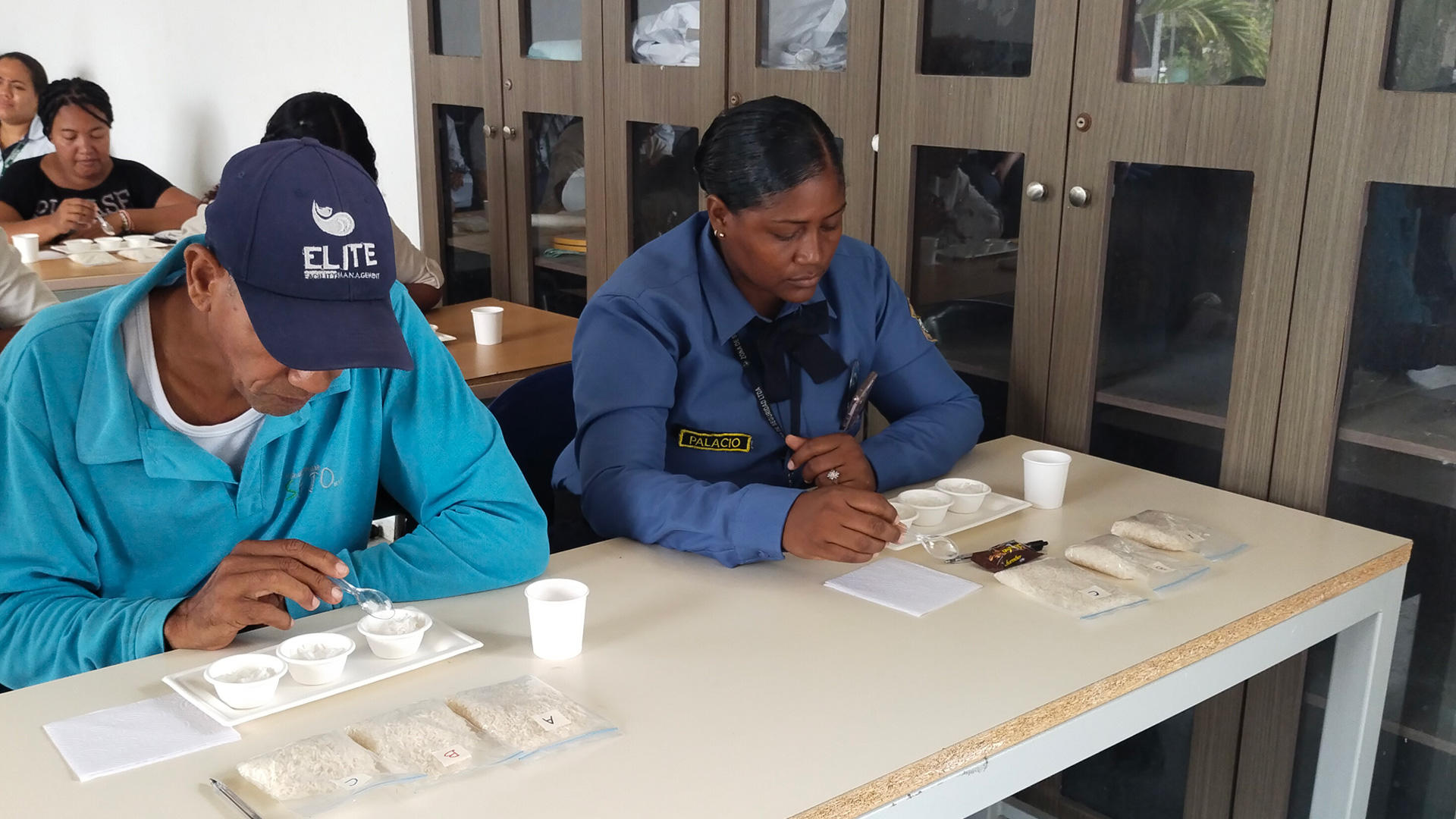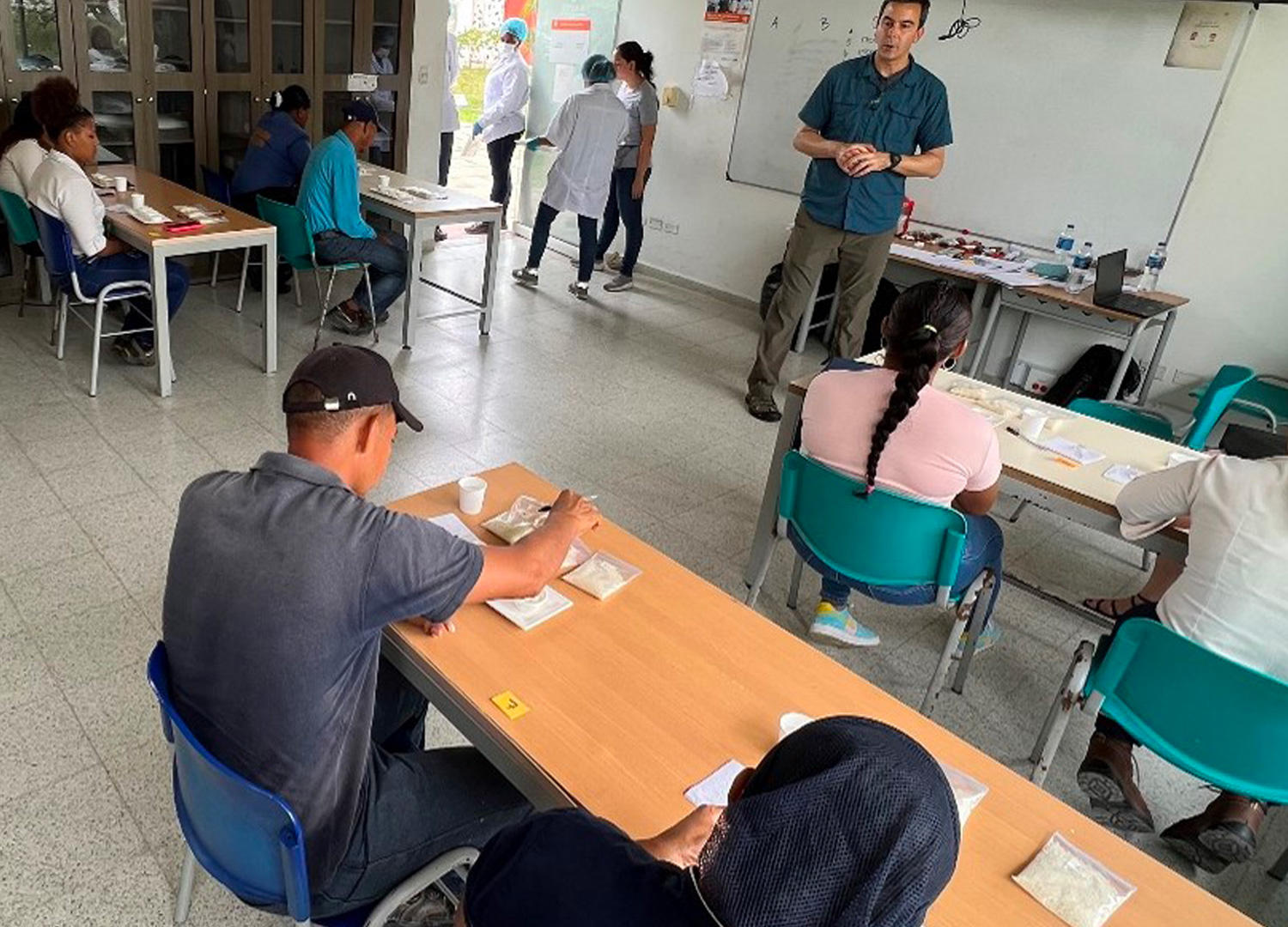Blog Biofortified rice contributes to increasing micronutrient consumption. Are consumers willing to pay for this solution in Cartagena, Colombia?

In October 2021, Fedearroz BIOZn 035 – a zinc-biofortified rice variety – was officially released in Colombia. Born from the collaborative research work of CIAT (currently Alliance Bioversity-CIAT) and disseminated by Fedearroz, this variety has the potential impact on addressing micronutrient deficiencies due to its higher zinc content. For instance, 114g of biofortified rice consumption for an adult woman would contribute 24% of her daily zinc requirements, while commercial varieties only contributed a 16% – 50% increase in intake. In the case of children, 59g would contribute 27% of daily zinc requirements, while commercial varieties contribute only 18% (Woods et al., 2020).
Mainly, this variety was targeted at the Caribbean region of Colombia, where it is identified with a high probability of impact due to the zinc deficiency levels – affecting 41% of children (ages from 1 – 4) (ENSIN, 2015) and the intense rice consumption levels (the national average is 41kg per person per year).
Furthermore, in the region, there is a joint effort led by CIAT to scale up biofortified rice production in one of the most depressed departments of Colombia (Bolivar is in the top ten departments with higher poverty rates). Those farmers receive high-quality seed and extension services in collaboration with our partner Fundacion Canal del Dique. We aim to generate high-quality, sustainable products that can satisfy a specific market segment of consumers and improve the regional rice producers' well-being.
Nevertheless, more than scale-up/production is needed. We need to connect from farm to fork. The demand side is determinant for achieving the potential impacts of this variety in increasing micronutrient consumption, and raises the question: are consumers willing to pay for biofortified rice? Will they substitute traditional rice? Consumers' answers to these questions are relevant and can contribute to correct policy designs to improve micronutrient deficiencies while providing an attractive alternative for rice commercialization. Furthermore, it is an input for breeders to identify new market segments and possible traits to be considered for improving biofortified varieties acceptance.
To answer those research questions, CIAT (current Alliance Bioversity-CIAT) and Arkansas University joint efforts to apply a commercial feasibility study for this rice variety in Cartagena city, one of the principal cities in the region and likely market for the product, we selected the methodology of the experimental auction to measure the value that consumers give to biofortified rice.
Auctions were applied in May 2023 to 400 people in Cartagena with the collaboration of SENA and Canal del Dique Foundation. Participants tasted biofortified rice in each one and were offered a price under experimental conditions that revealed their willingness to pay. We have learned that consumers value biofortified rice differently depending on the amount of information provided to them. The experiment makes them evaluate distinct types of rice without knowing the samples. They recalculate their offered prices by providing them with information about each sample (like the type of rice or the biofortified benefits).

The next step is formally completing the analysis and sharing our results and lessons learned with our partners. It is crucial to keep and strengthen the collaboration with local actors that contribute significantly to our research activities. In this case, the support of the Canal del Dique Foundation and the Public National Training Service (SENA) was determinant for the study implementation. Besides, projects and capabilities inside these institutions could boost the acknowledgment and acceptance of innovations (for producers) and new products (for consumers).
Study researchers
- Alvaro Durand-Morat, associate professor, agricultural economics and agribusiness faculty, University of Arkansas, Estados Unidos
- Sara Oswalt, master student, agricultural economics and agribusiness faculty, University of Arkansas, Estados Unidos
- Sonia Gallego, senior research associate, Crops for Nutrition and Health Alliance Bioversity-CIAT, Colombia
- Hans Nasner, intern, PISA-FAE, Alliance Bioversity-CIAT, Colombia
- Tatiana Rivera, research associate, PISA-FAE, Alliance Bioversity-CIAT, Colombia
- Robert Andrade, postdoctoral fellow, PISA-FAE, Alliance Bioversity-CIAT, Colombia
Acknowledgments
- Maria Eugenia Rolón (Executive director – Canal del Dique Foundation)
- Sorelly Torres Pérez (Subdirector – SENA, Bolivar Agribusiness and Mining Center), Yeni Liney Romero (Subdirector – SENA, Bolivar Trade and Service Center)
- Adriana Davila Ruiz, Leidy Laura Fuentes and Laureano Ruidiaz (Instructors – SENA, Bolivar Trade and Service Center)
- Jhon Richard Barrios (Instructor – SENA, Bolivar Agribusiness and Mining Center) and all the instructors and students that participated on study implementation.
References
- Ministerio de Salud Y Protección Social, República de Colombia (MINSALUD); Departamento Administrativo para la Prosperidad Social; Instituto Colombiano de Bienestar Familiar (ICBF); Instituto Nacional de Salud (INS); Universidad Nacional de Colombia. Encuesta Nacional de la Situación Nutricional en Colombia-ENSIN 2015. Bogotá: Ministerio de Salud y Protección Social; 2019.
- Woods B-J, Gallego-Castillo S, Talsma EF, Álvarez D (2020) The acceptance of zinc biofortified rice in Latin America: A consumer sensory study and grain quality characterization. PLoS ONE 15(11): e0242202. https://doi.org/10.1371/journal.pone.0242202
